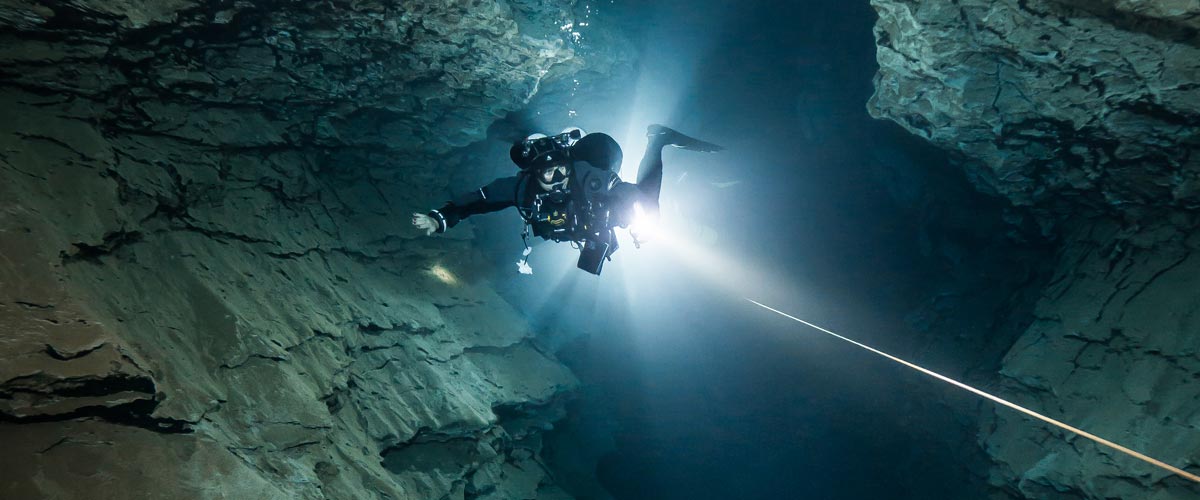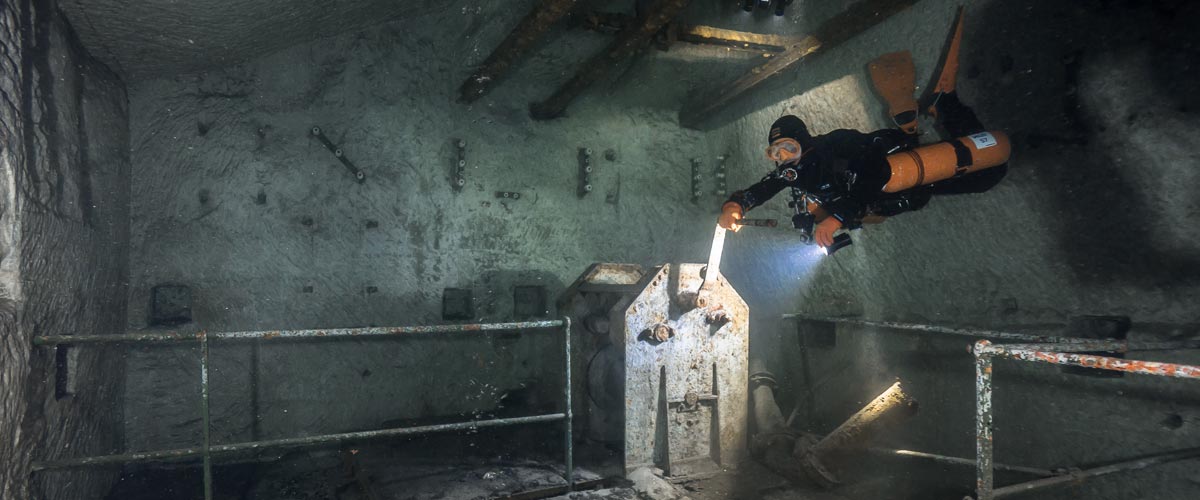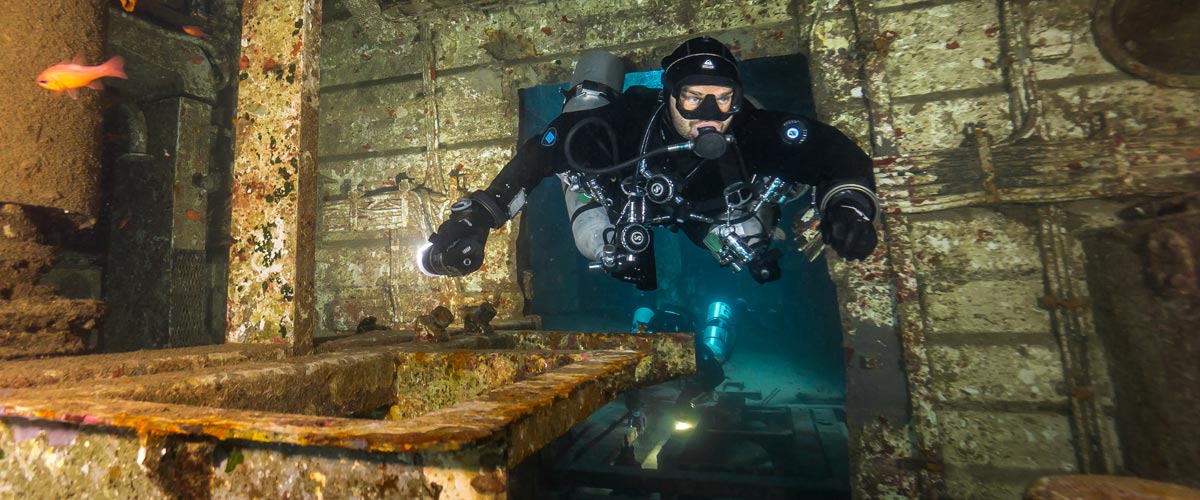Dive Training Blogs
Mine Diving in the UK
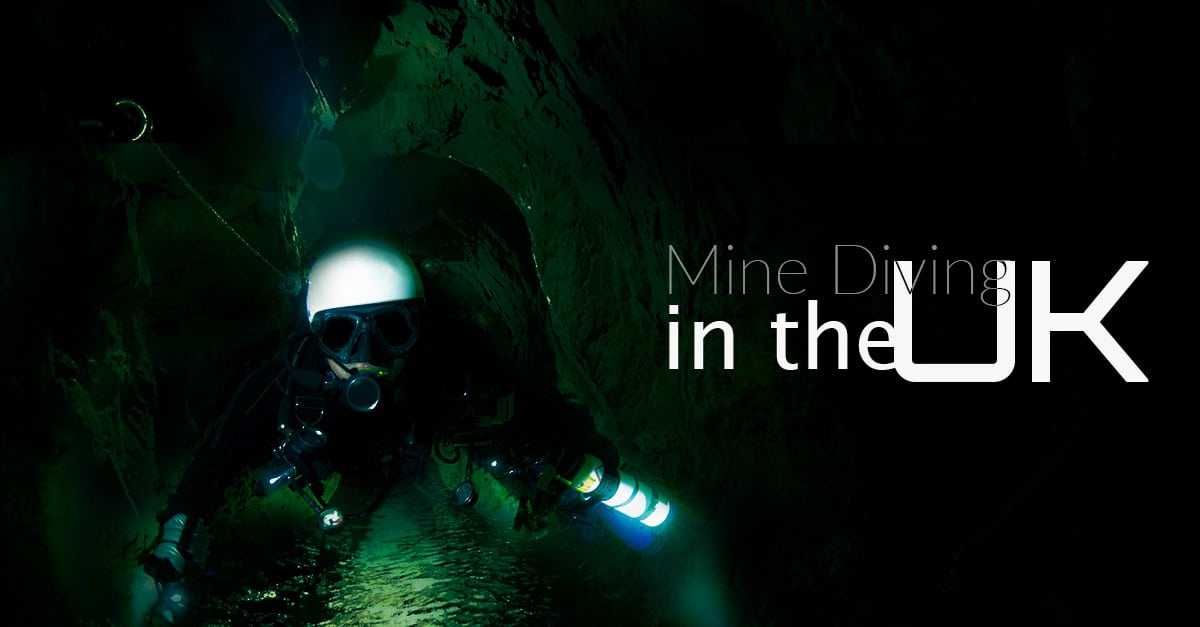
By Michael Thomas
Saruman:
Moria… You fear to go into those mines. The dwarves delved too greedily and too deep. You know what they awoke in the darkness of Khazad-dum… shadow and flame. – J.J.R. Tolkien
The British Isles has a significant underground history both of natural caves and mine workings. When I walk or swim around some of the extensive disused mine workings it’s not hard to see why the mines have given the imagination and backdrop to many books and films. The mines that we can access and dive are found in all corners of the United Kingdom to Scotland via Wales and all the way down to Cornwall in Southwest England.
I’m not going to list every mine by mine account of location, access and dive descriptions as that would be too long and tedious. Plus, some sites are sensitive to access and should also be protected from over diving. It’s not to say you can’t dive these sites but doing research and gaining permission correctly is half the fun!
Access Arrangements and Cave/Mine rescue
All underground sites in the UK have access requirements. That means you the diver have to research what is required of you to be able to dive these sites. Some are as simple as having open access (at the time of writing) and require you to do nothing more than take responsibility for yourself when in the mine. The landowner and mineral rights owner have warned you of potential dangers, where the rest is up to you. Some sites require you to hold BCA (British Cave Association) membership and BCA diving insurance. The insurance is your public liability insurance. You must apply for access to the site you wish to dive in the manner the landowner requests. This all sounds a bit difficult but with planning and talking to the correct people it’s actually very easy and very rare for access to be denied if all your paperwork correct. If you are reading this from outside the UK and wish to mine dive here, contact myself or another TDI cave/mine instructor in the UK and they will help.
Venturing underground into mines or caves in the UK or any other place in the world carries some risk. I would advise all mine divers to leave a callout time with someone you trust on the surface. It’s this person that will summon the cavalry if you are not back on time. In the UK we have a fantastic cave rescue organisation that you can summon in an emergency by phoning 999 and ask for police and cave rescue. You will then be contacted by cave rescue for details of your location (please make sure you have your correct location name) and details of the incident. This is a free service in the UK, donations to the cave rescue teams are always appreciated, especially if you have just been rescued.
Here is a sample of some of the mine diving locations in the UK. All the sites that follow are well documented and easy to research in guidebooks or on social media. The others …… well …. let’s not give it all away at once.
Dinas Silica Mine
Access is open, no formal permission required.
Dinas is probably and historically the most well documented and popular mine dive in the UK and many trainee mine divers’ first mine dive. Located in South Wales, it has a walk of around 15 minutes to reach the entrance from the car, initially steep and rocky then a gentle walk over the hill. Good walking boots are recommended and a rucksack to carry your equipment. Once at the entrance a short walk underground of around 80m reaches the dive base. Diving is extensive in six levels down to a depth of 22m in generally very good visibility and water temperatures of 7°C.
Cambrian Slate Mine
Access is open, no formal permission required.
Located near Llangollen in North Wales the impressive entrance to this Slate Mine is down a steep wooded and at times slippery slope. Once inside the mine, a short walk brings you to one of five separate dive bases. It’s possible to dive from any dive base to arrive at another but navigation is complex and several dives would be needed to learn the system. The mine is extensive and has many very good artefacts in situ and in places very large passage, do not lose the line. Open circuit cylinders will get you some good dives but to reach the further reaches at depth a CCR is advisable. Water temperatures around 7°C and visibility varies from 10-15m down to 2-3m depending on the rainfall causing a stream that flows into the mine to increase in volume and change the visibility.
Aber Las Mine
Access BCA Membership and permission required from landowner via UKMC
Really Aberlas is a continuation of Cambrian mine next door, a collapse in the passage has now separated the mine into two separate dive sites with different entrances. Do not approach the collapse area from either Aber las or Cambrian mine, it is still unstable! Permission is a must to acquire before diving. A steeply inclined shaft that can be walked down for around 80m reaches the dive base. Care is needed as the slate debris you walk on is slippery especially when carrying heavy dive equipment. From the dive base, two passages lead off. One into the deep route at 20m one into the main shallow tunnel at 12m. A round trip dive is possible as is exploring the many side passages and superb mine artefacts that are in situ. It’s possible to dive 588m from dive base. Visibility is generally very good apart from at the dive base where a stream washes slate dust into the pool, which you disturb when getting ready. Your exit will mostly always be in visibility of 1m or less over the last 30m or so, depending on how many divers you have in your team.
Holme Bank Chert Mine
Access is required contact Derbyshire caving association for current access procedures.
The mine was used for extracting chert stone which was used in the pottery industry. The mine is fairly complex but the underwater section fairly short around 200m length total at 5m depth. Visibility is good and the site is now used extensively for overhead training. Still worth a dive on your mine tour of the UK.
Hodge Close Slate Mine
A goodwill fee is payable for parking your car but otherwise, no formal permission is required.
The mine entrance is reached after a walk through a tunnel and climb down a short ladder. An open water Quarry is reached with a maximum depth of 32m. The entrance to the mine is reached at a depth of 24m in the far wall of the quarry. Around 200m of passage can be explored through three chambers reaching a distance of 150m from the dive base. Water temperatures are around 6°C and visibility generally good. The site is 150m above sea level and combined with cold water and exertion of getting to and from the dive base, divers should consider conservative decompression plans. Several accidents have happened here.
Roscobie Mine
No formal permission required.
This is one of the most Northern mines in the UK being found in Fife, Scotland. The mine was used for extracting limestone. Water temperatures vary from 12°C on the surface in summer to the underground constant temperature of 7°C Visibility is sometimes poor in the entrance areas but can increase to 20m further into the system. At the Northern end of the entrance, lake two entrances are found with around 200m of diving possible at a depth of 8-10m, or maybe less. On the Eastern side are several more entrances but the diving here is more serious with the silty passage, old mine debris and complex navigating in poor visibility. This area is currently being re-explored and not suitable for tourist diving.
Noxon Park Iron Mine
A formal access agreement covers all caves and mines in the area, contact Forest of Dean cave conservation and access group permits@fodccag.co.uk or any cave instructor for information. BCA insurance is required.
Evidence exists of mining in the Forest of Dean over 2000 years ago. The mines were worked up until just after World War II when the last operation ceased. Water level varies considerably over the year from summer to winter but on high water times, depths of up to 50m can be found in the mines. The mines are very extensive and some long and deep dives can be conducted here in very good visibility and 7°C water temperatures. Navigating can be complex and great care should be taken. The physical access to the dive base can be challenging and a knowledge of dry caving skills would be an advantage to transport you and your dive equipment through the mine safely. Despite the challenges of this site the quality of diving here is superb.
Bream Iron Mine
This mine is next door to Noxon Park Iron Mine, just along the wooded ridgeline so access requirements are the same as for Noxon Park above.
Reaching the dive base again requires some dry caving skills whilst moving down the steep terrain to the dive base. Visibility is similar to Noxon Park and water temperatures of around 7°C The complex nature of the mine allows the diver some long and challenging dives. Exploration of these mines is still possible with new ground waiting to be rediscovered.
I hope the above has given you a taste of what UK mine diving has to offer, combined with some superb cave diving and a massive amount of shipwreck diving, we have plenty to offer the visiting Technical Diver.
To find out more about International Training, visit www.tdisdi.com.

Blogs
Intro to Tech: What is it about?
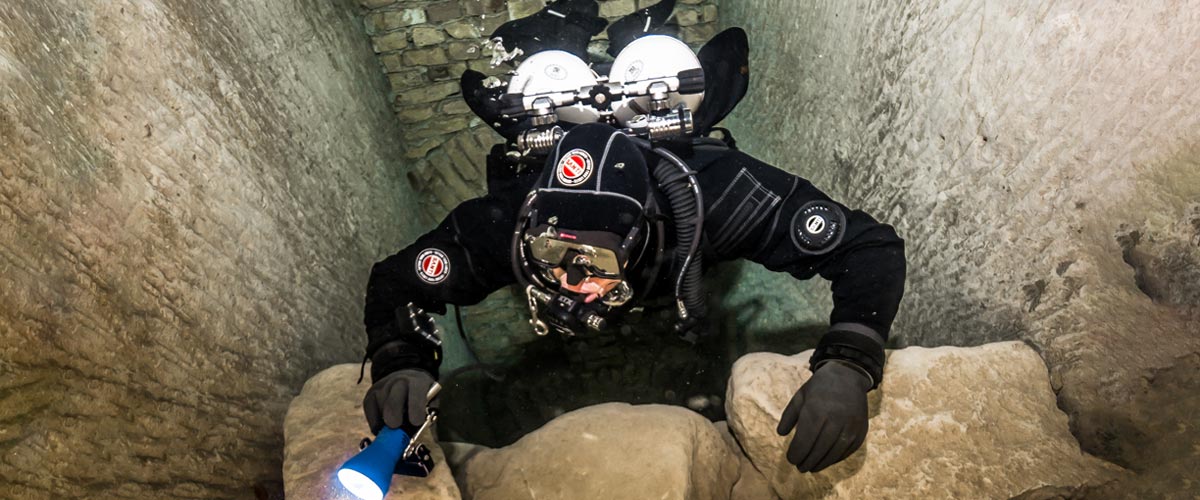
Article by José Pablo Mir
Pictures by Cezary Abramowski
The world of technical diving is exciting. It opens the door to new sites, depths, and bottom times. More importantly, it opens our minds to a new way of planning, facing, and experiencing dives, even those not purely technical.
Becoming a technical diver is a process, and like in other aspects of life, we should find the proper entry point that suits us best based on our knowledge and experience. The Introduction to Technical Diving course from TDI -the world’s largest and most recognized technical diving teaching organization- is the best option for divers who have yet to gain experience in the fundamental aspects of this new practice. The course’s content and its embrace of new techniques and technologies make it possible to acquire a solid foundation to learn and gain experience in this practice properly.
Becoming a technical diver is not something that happens overnight, whether deciding to become one or receiving a certification card stating we are now technical divers. It is a slow process extending farther away than any introductory course. It requires effort and dedication. But it will bring us satisfaction from day one -or two.
It is a matter of mentality
First, we must understand and accept that technical diving, involving greater depths, longer bottom times, exotic gases, virtual or real ceilings, and more, comes with higher levels of risk than the sport diving we have been practicing until now.
Although this discussion usually starts with a warning about risks, as I’ve done in the previous sentence, our practice is not a game of chance.
Technical diving is a rational activity that requires maturity and good judgment, and we will put everything into ensuring that each dive is a successful one -meaning we return from it safe and sound. With this understanding, we will strive to establish a mental attitude more aligned with our practice and its realities.
This new “technical diver” mindset we will develop will lead us to be more cautious in our executions, more analytical in our plans, more rational in our strategies, and more detailed in our procedures.
Experience will keep teaching us to know ourselves better, to keep our anxiety and other emotions under control, and to manage our impulses. Over time, our senses will sharpen, and we will be more attentive to the particulars of the situation we find ourselves in.
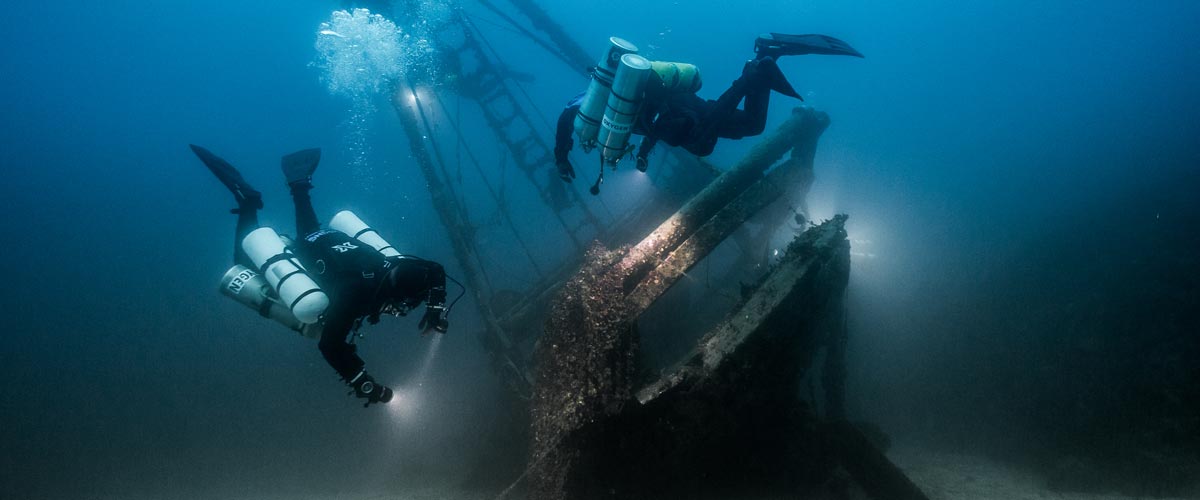
Strategies and procedures
Our strategies, those broad guiding lines tracing the path to follow, from how to approach planning to where, with what, and how we are willing to get there, will be more specific and more practical. Not because they magically become so, but because we will consciously and deliberately frame them that way.
We will establish clear, concise, and realistic procedures. Not only for the undesirable situations that may present themselves but also for those that are part of our dive objectives.
Even though, as technical divers, we often use equipment different from what we were previously accustomed to, it is essential to note that the gear does not make the diver. In a way, we could consider such equipment as the necessary tools to implement what our goal seeks to achieve, according to our strategies and procedures.
Technique plays an important role
We must put our greatest effort into learning and perfecting the different techniques we will be acquiring. Buoyancy, trim, propulsion, cylinder handling, deploying DSMBs and lift bags, valve drills, and more are essential skills we must begin to master to progress in our art. What we cannot do, when we need to do it, can harm us.
Our techniques must be effective and achieve the purpose for which they were devised. But they must also be efficient and require the least resources possible, including the time they take and the effort they demand. Effectiveness and efficiency will prevail over beauty and other considerations that may come to mind, although none of them should be mutually exclusive. A technique executed efficiently and effectively tends to have an inherent beauty.
Refining techniques is a lifelong mission. Some of them will be easy to master from the go; others, on the other hand, will be our life mission and will require many repetitions just to resemble the idea we have in mind of how they should be executed.
We must consider the environment
Our learning, the needs and musts of the practice we engage in, the experience we gradually gain, our strategies and procedures, and even our equipment and tools change with the environment.
Diving in the ocean, everything about us must be suitable for ocean dives. Conditions there rarely emulate those found in a pool, lake, or river. Variable winds and currents, greater depths, visibility conditions, other divers with uncertain skills around us, marine life, maritime traffic, distance from the coast, and many other factors add complexity and uncertainty.
It is never necessary to master the pool on the first day, but planning and aspiring to gradually cope with the ocean’s conditions is essential.
The cost of good training
We are aware that our resources are often scarce in relation to the possibilities of use we could give them if they were not. To a greater or lesser extent, we are part of the economic reality in which we are embedded.
Fortunately, the cost of good technical diver training is not an entry barrier. Comparing training and equipment costs, we see that the former are generally lower. Yes, lower cost for personalized service, essential to our future
performance and safety, than for a series of mass-produced products that are mere, albeit necessary, tools for an end.
The value of good training
The value of the training we received encompasses a range of characteristics, from emotional and methodological to technical and technological. TDI and its Introduction to Technical Diving course offer a deep and modern approach, with a teaching strategy that aims to create thinking divers, not merely obedient ones.
As technical divers, our knowledge is our primary tool. In this type of activity, what we don’t know can harm us.
Is this course optional?
Unfortunately, the fact that this Introduction to Technical Diving course is not a prerequisite for any subsequent training is an invitation to consider it optional. And we all know what usually happens to “optional” under budget constraints.
However, this course should be seen as optional only by those divers who are somehow familiar with the use of technical equipment, who have a mindset more in line with the requirements of this type of diving, who plan and execute the dives the proper “technical” way, who know their gas consumption rate, who are not intimidated by non-decompression tables, who feel comfortable using their dive computers, and know the techniques and have at least an acceptable level of buoyancy, positioning, and propulsion. Those can go straight to a more advanced training course, such as TDI’s Advanced Nitrox.
We must ask ourselves whether or not we are in that group.
Remember our goal: to have fun
Recreational diving is our passion. Jumping into the water carrying heavy equipment and having properly dotted our I’s and crossed our T’s have only one ultimate goal: fun. This is the activity we have chosen as a hobby. We must enjoy it; it must give us pleasure and make us vibrate.
Having a good time is not optional!
Blogs
Four opportunities to go pro in 2024 with Dive Friends Bonaire
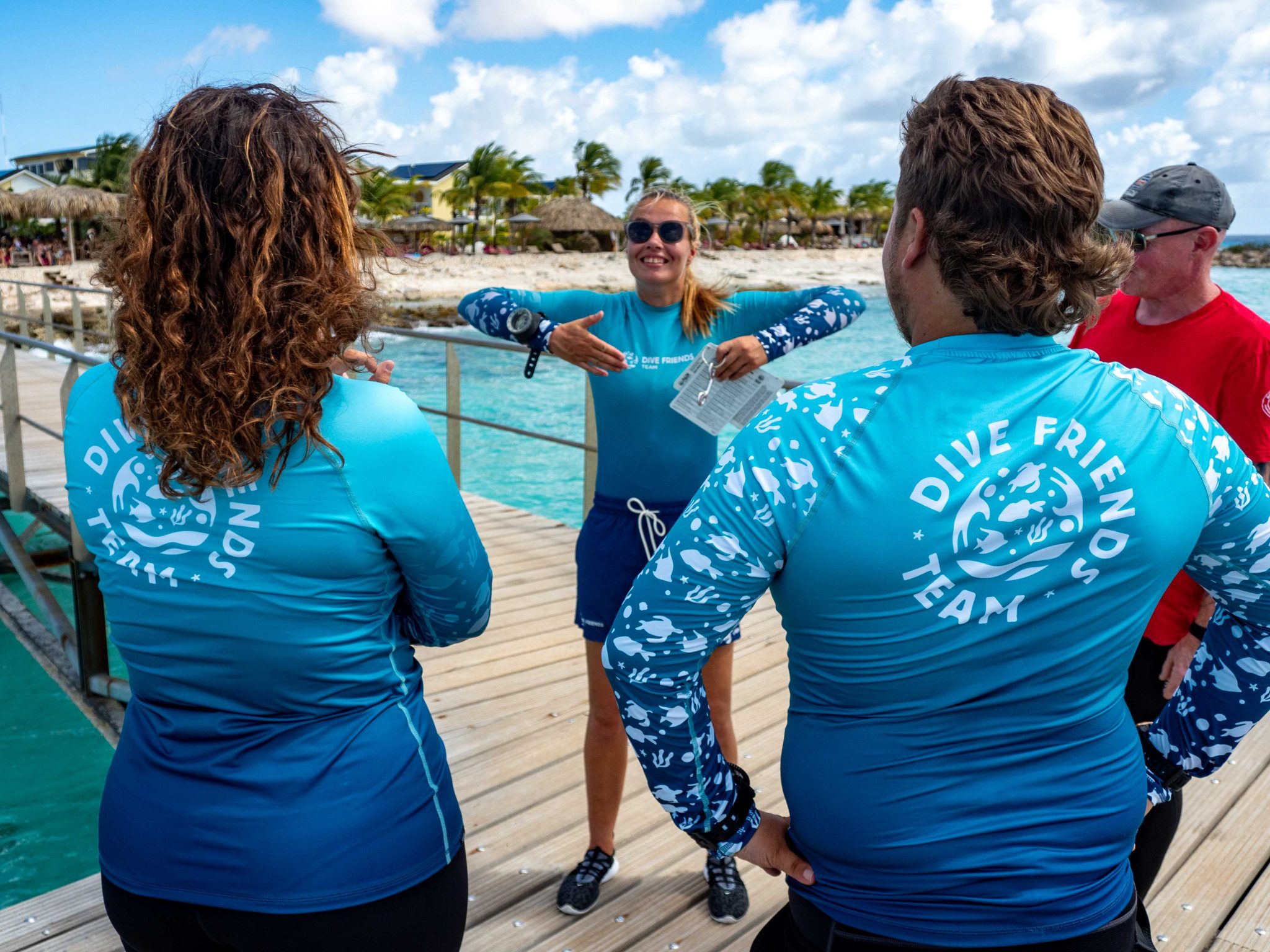
Dive Friends teaches the Instructor Development Course (IDC) several times a year to students who are eager to share their passion for diving with the world.
Dive Friends is known for the personal approach throughout the course. Their in-house course director will lead the students through every essential step, mentoring them to achieve their fullest potential as a dive instructor.
Applications for the following IDC start dates are now open:
- 12 April
- 5 July,
- 20 September
- 29 November
Partnership with Casita Palma
If the student opts for the IDC-Deluxe or IDC-Supreme package, their accommodation will be arranged for them at Casita Palma. This small and quiet resort is within walking distance from Dive Friends Bonaire’s main dive shop location and has everything you need to relax after an intense day of IDC training. Breakfast is included, so the student will always be fuelled and ready for their day.
Contact Dive Friends Bonaire’s Course Director Eddy for more information: coursedirector@divefriendsbonaire.com.
-

 News3 months ago
News3 months agoHone your underwater photography skills with Alphamarine Photography at Red Sea Diving Safari in March
-

 News3 months ago
News3 months agoCapturing Critters in Lembeh Underwater Photography Workshop 2024: Event Roundup
-

 Marine Life & Conservation Blogs3 months ago
Marine Life & Conservation Blogs3 months agoCreature Feature: Swell Sharks
-

 Blogs2 months ago
Blogs2 months agoMurex Resorts: Passport to Paradise!
-

 Blogs2 months ago
Blogs2 months agoDiver Discovering Whale Skeletons Beneath Ice Judged World’s Best Underwater Photograph
-

 Gear Reviews2 weeks ago
Gear Reviews2 weeks agoGEAR REVIEW – Revolutionising Diving Comfort: The Sharkskin T2 Chillproof Suit
-

 Marine Life & Conservation2 months ago
Marine Life & Conservation2 months agoSave the Manatee Club launches brand new webcams at Silver Springs State Park, Florida
-

 Gear Reviews3 months ago
Gear Reviews3 months agoGear Review: Oceanic+ Dive Housing for iPhone















